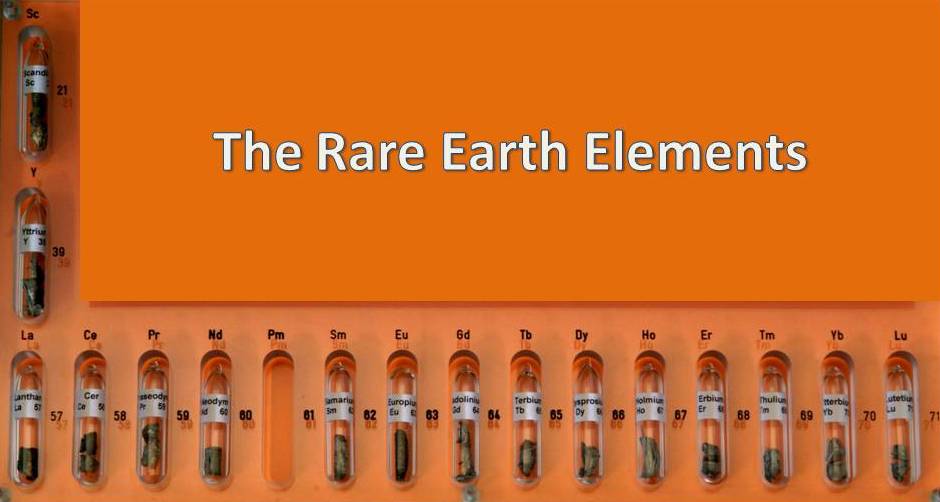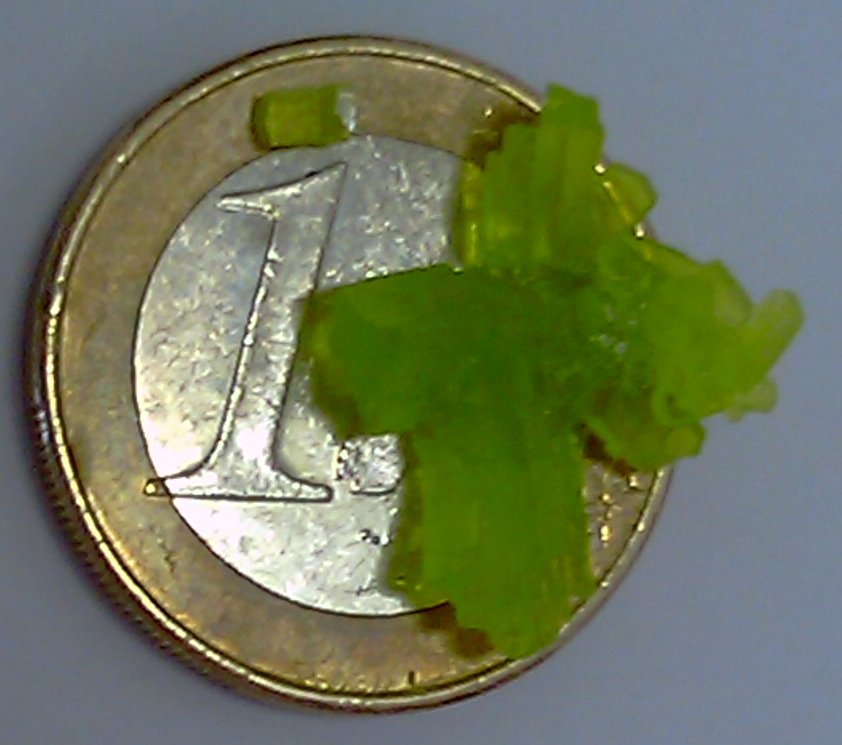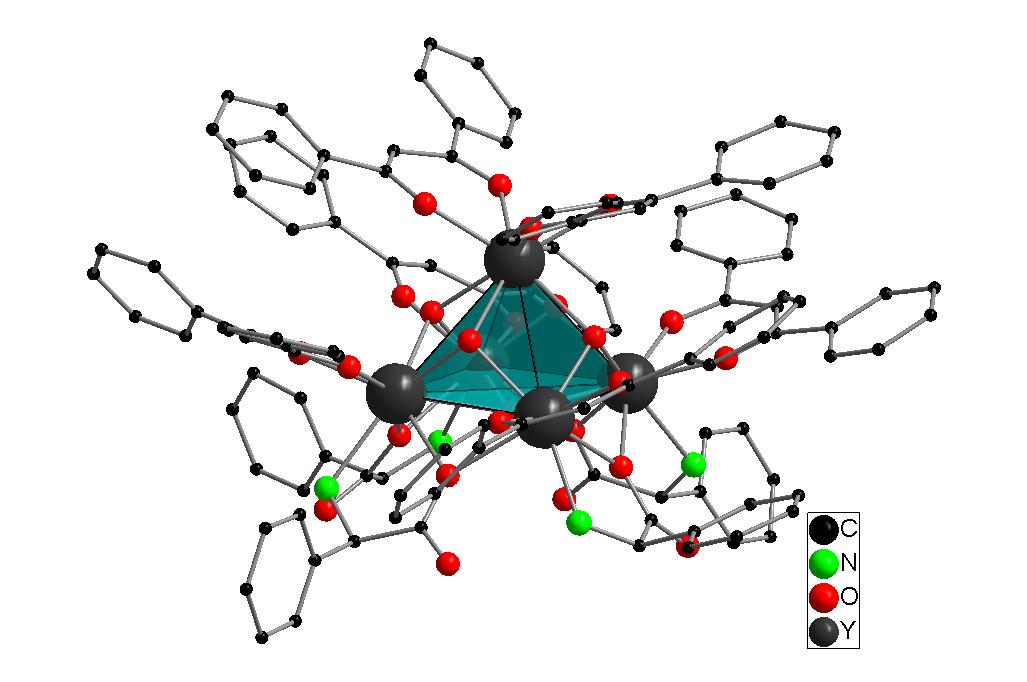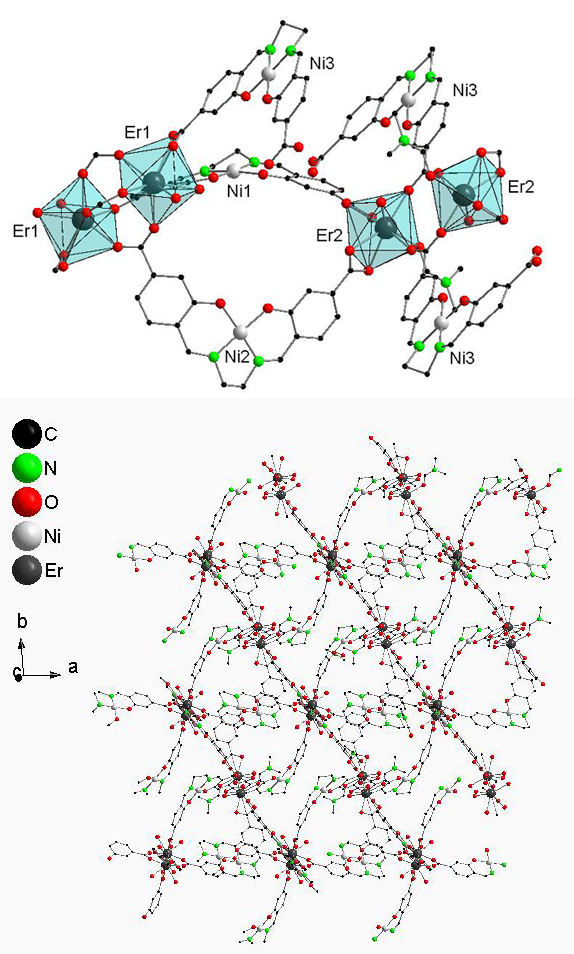C1.5: Lanthanide Clusters for Potential Photonic and Magnetic Applications
Subproject Leader: Peter Roesky
Contributing Scientists:
Present: Sebastian Marks, Anna Theresa Wagner, Balasubramanian Murugesapandian, Asamanjoy Bhunia
Past: Pavel Petrov, Dominique Thielemann
The aim of the project is the construction of well-defined and structurally characterized nanoscaled systems which are based on rare earth metals. By using these systems, we are interested in the excellent chemical and physical properties of these materials, which especially are the magnetism, luminescence, and optoelectronic effects.
Most of the reported lanthanide hydroxy clusters were obtained either by hydrothermal synthesis or by partial hydrolysis of air sensitive material. We have established a synthetic protocol to obtain these species in gram scale in a predictable manner without using any special techniques. We could also show that our lanthanide clusters are not only stable in the solid state but also in solution and in the gas phase. As functional groups we attached for example different natural amino acids to selective binding sites of the clusters’ periphery, which allows an unprecedented predictability with respect to coordination geometries [1].
In cooperation with other groups some of the clusters were used in various polymer matrices via miniemulsion polymerization. The resulting cluster-polymer hybrid nanoparticles are spherical in shape and possess a narrow size distribution. As a result of encapsulation, more than 1000 mg·L-1 of the hydrophobic lanthanide clusters could successfully be dispersed in water. The photophysical properties of the emulsion show the successful avoidance of water from the vicinity of the clusters. Furthermore, a very efficient energy transfer from the ligand and polymeric unit to Eu3+-ions can be observed in dispersion [2].
In cooperation with the groups the magnetic properties of some compounds were determined. Although the study of paramagnetic metal-ion aggregates has been of increasing interest in attempts to assemble single molecule magnets (SMMs) little work has been reported on purely lanthanide-based systems. Some of our hydroxo-bridged dysprosium cluster show SMM behaviour [3].
In the second part of the project we are dealing with lanthanide based metal–organic frameworks (MOFs) and infinite coordination polymers (ICPs). The synthesis of MOFs requires two main components: rigid bifunctional organic linkers and metal centers. The rigid bifunctional organic linkers serve to bridge the metal centers, whereas the metal centers act as nodes and as specified connectivities in the resulting MOF architecture. As linkers we use salen based “metalloligands” which are suitable for the construction of higher dimensional homo- or heterometallic ICP´s or MOF´s through reaction with further metal centers. As knots lanthanide metals were used. Having d- and f-block metals in close proximity on definite binding spots, we investigated the magnetic properties of these compounds [4,5].
References
|
[1] |
D. T. Thielemann, I. Fernandez, and P.W. Roesky, Dalton Transactions, 39, 6661, (2010) |
|
[2] |
C. P. Hauser, D. T. Thielemann, M. Adlung, C. Wickleder, P. W. Roesky, C. K. Weiss, and K. Landfester, Macromol. Chem. & Phys., 212, 286, (2011) |
|
[3] |
M. T. Gamer, Y. Lan, P.W. Roesky, A.K. Powell, and R. Clerac, Inorg. Chem., 47, 6581, (2008) |
|
[4] |
A. Bhunia, P.W. Roesky, Y. Lan, G.E. Kostakis, and A.K. Powell, Inorg. Chem., 48, 10483, (2009) |
|
[5] |
P. W. Roesky, A. Bhunia, Y. Lan, A. K. Powell, S. Kureti, Chem. Commun. 47, 2035, (2011) |
List of Publications 2006-2011 as PDF
Subproject Report 2006-2010 as PDF



